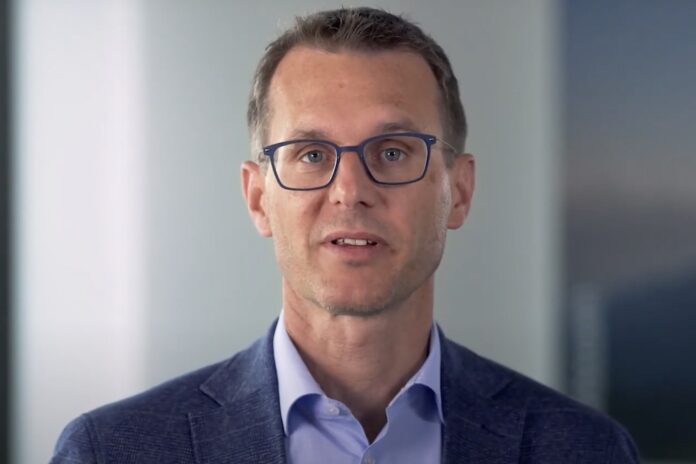A recent Federal Court decision may slow down the final 5G push in the country
At Swisscom’s recent results call, CEO Christoph Aeschlimann said the operator had increased the 5G plus coverage by 6 percentage points year-on-year and it now stood at 83% population coverage with 5G plus. However, a recent Federal Court ruling, which requires retrospective planning applications for mobile phone sites that have been upgraded to 5G, has left the chief executive annoyed.
Speaking to the AWP news agency, and reported by Nau.ch, Aeschlimann said Swisscom alone will need to submit 1,300 retrospective planning applications. Adding in Sunrise and Salt takes the total to 2,500 retrospective building applications to be done. This adds to around 2,500 building permit applications already pending.
“We are fighting to achieve the goal of 90 percent coverage with the fast 5G+ standard by 2025. But it has not become any easier with the Federal Court ruling,” the agitated boss (above) told AWP.
Swisscom has filed an appeal against this with the Federal Administrative Court and, if necessary, will take the case all the way to the Federal Supreme Court. Aeschlimann said he expects the proceedings to take five to eight years – just in time for 6G.
Swiss authorities discover beamforming
Netzwoche reported in July that the canton of Aargau allowed a regular building permit procedure for requests for changes to 5G installations, but its Department of Construction, Transport and Environment (BVU) announced that following the April Federal Court ruling, this straightforward practice was no longer legal.
Due to federal legislation (NIVS), mobile phone providers can apply a correction factor to the approved transmission power for adaptive antennas to increase their performance in the short term. Following the ruling, the BVU wrote to the mobile phone providers stating that for existing antennas with active correction factors that were approved in the simplified minor procedure without a building permit procedure, the operators must now subsequently submit a building permit application within six months or switch off the correction factor. This impacts 200 antenna sites in this canton alone.
Politics and power
In June, media outlet RTS warned that adaptive antennas can now emit up to 10 times higher than conventional antennas during their peak emissions, darkly warning that the decision to allow them effectively went against environmental considerations but what made as a political decision, vaguely implying it wasn’t science-based.
As part of the discussions which began in December 2020, RTS reported that the Federal Office for the Environment wants to allow operators to adjust directional antennas to a maximum of 4 times the legal power. The operators were asking to be able to adjust the power to 15 times more. And the Federal Office of Communications even agreed to go up to 20 times.
According to figures obtained by the media outlet, if the 5G antennas couldn’t emit new power, 46,000 more would need to be built rather than the 3,100 that operators, at the time, were suggesting. That would amount to quite a few planning permissions.
The Swiss on the whole are pretty ambivalent about 5G. A survey by Comparis in 2022 found that some 42.5% of adults supported the government’s strategy to encourage a rapid 5G rollout, but 41.7% were against.



